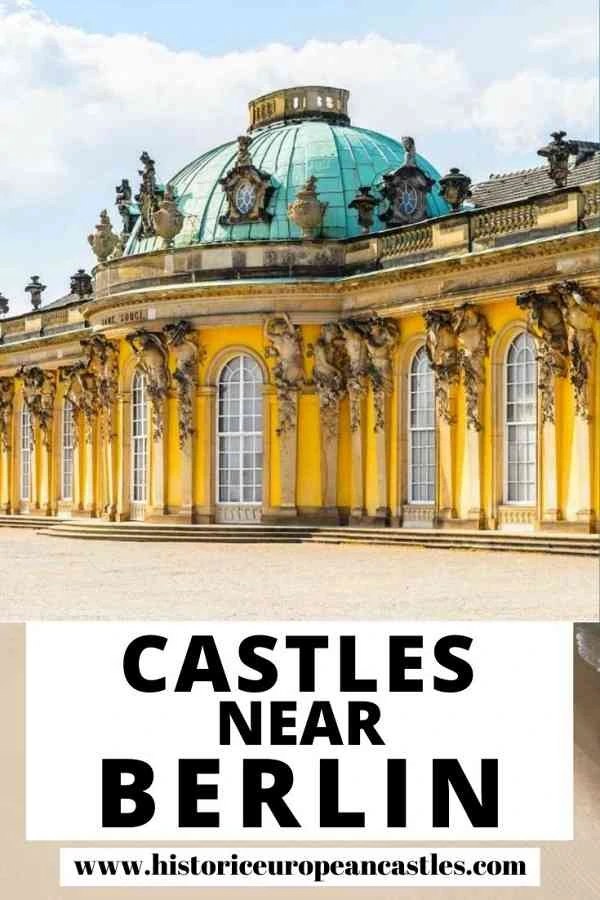Whether you’re visiting Berlin on a weekend city break or are planning a more extensive tour of Germany, a trip to at least one of Berlin’s Prussian castle’s is a must! You might not realise it but Berlin and Brandenburg contain numerous historic castles dating back 1,000 years or more – Learn the history of the Prussian Kings, the German Kaisers, and even the Russian Tsars as you delight in the architecture, history, and landscaped surroundings of these Royal residences and pleasure palaces.
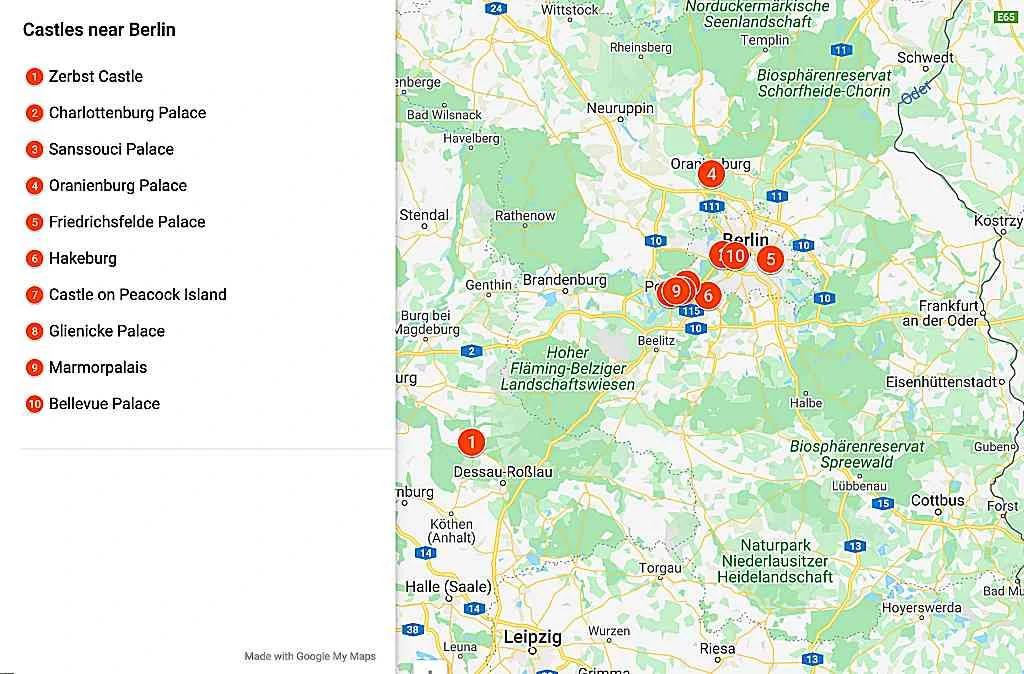
Where to Stay in Berlin Berlin is the best place to base yourself if you want to visit the nearby castles. You can book a rental car, take public transportation, or book a guided tour to see the impressive castles near Berlin. Maritim proArte Hotel Berlin: The hotel is located in the centre of Berlin, within walking distance of the famous shopping street and other attractions. The rooms and suites are spacious and modern, and you can enjoy the spa area, the fitness room or the swimming pool after visiting the castles near Berlin. The hotel also has a bar and two restaurants. Book your stay here. Hotel Luc, Autograph Collection: Centrally located, this luxury boutique hotel offers stylish rooms with marble decor, a spa with a modern sauna, and a fitness room. You can enjoy gourmet food at the restaurant or have a drink at the bar. Book your stay here. Hotel Amo: Located close to some of the landmarks of Berlin, this hotel offers modern and comfy rooms. At the Hotel Amo by AMANO Friedrichsstraße, you can enjoy meals at the in-house restaurant, and breakfast is served in buffet form. Book your stay here. How to Get Around Berlin The easiest way to explore the castles near Berlin is by car. I recommend booking a car through Discover Cars. They guarantee the best price, you can compare all rental car agencies’ prices, and you can cancel or modify your booking for free. Click here for more information and to check the latest prices. You can also book a guided tour from Berlin to visit the impressive Sanssouci Palace. Click here for more information on the guided day trip. Or you can take the train or bus to visit the castles nearby. Click here for more information about tickets.
10 Castles You Should Visit Near Berlin
1. Zerbst Castle
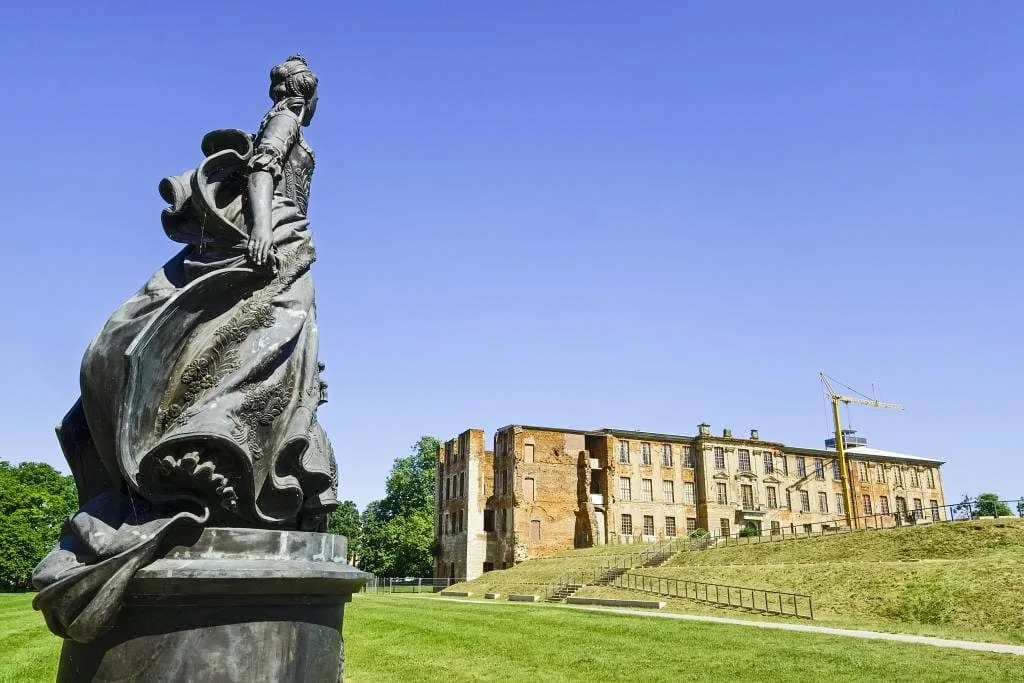
The former residence of the Princes of Anhalt-Zerbst from the 17th-18th century and the childhood home of Princess Sophie of Anhalt-Zerbst who is better known as Catherine the Great, Zerbst castle was once among the finest castles in central Europe.
Semi-restored today after the abandonment due to the family line dying out and then the bombings of WWII, visitors can see the ruins of 3 wings of the 5 storey castle, wandering around the outer walls of the castle before venturing inside to see the partially restored interior of the Eastern wing.
Where: Zerbst, Saxony-Anhalt
When: 17th century
Style: Baroque
Open for visit: Yes, guided tours available on selected days check here for more information.
2. Charlottenburg Palace
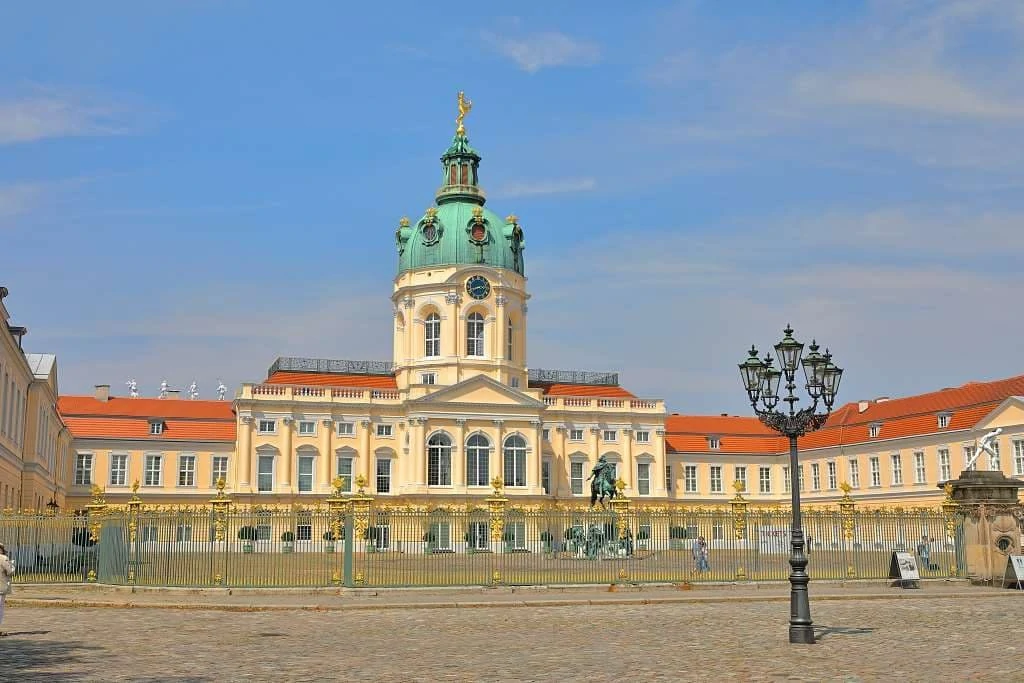
Built at the end of the 17th century for Sophie Charlotte, the Queen consort in Prussia, initially as a small country house, Charlottenburg Palace was expanded in the 18th century giving us the magnificent 505 metres long palace that we see today.
It is the best surviving example in Berlin of the architectural skills and styles of the Prussian Kings which includes the 50-meter-high dome which is one of Berlin’s most eye-catching landmarks to this day.
Step inside to admire the opulent Baroque interior as you take a guided tour through the richly furnished historic apartments seeing the bedroom of Frederick I, the Red Braid Room, the living rooms of Sophie Charlotte plus the Rococo staterooms before stepping outside to admire the palace park.
Where: Berlin
When: 17th – 18th century
Style: Baroque
Open for visit: Yes, check here for more information.
3. Sanssouci Palace
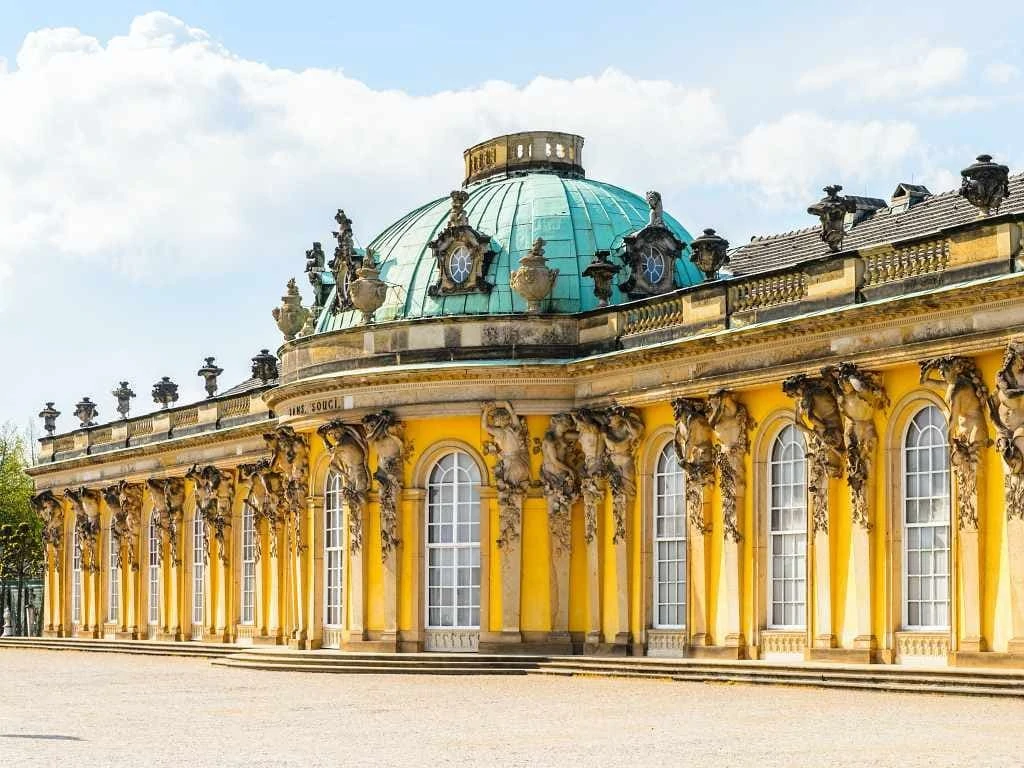
A palace that rivals Versailles, Sanssouci (which translates as ‘without a care’) was the elegant summer palace of Frederick the Great, King of Prussia.
A personal sanctuary for Frederick, the King said that the palace ‘should only last my lifetime’ and was, therefore, reluctant to have any repairs carried out.
Thankfully, the charming palace has survived to this day, even coming out unscathed from the bombings of WWII, allowing visitors to step inside the elegant rooms and wander through the magical park and palace grounds to enjoy the peace and tranquillity that Frederick enjoyed here with his beloved dogs.
Where: Potsdam, Brandenburg
When: 18th century
Style: Rococo / Baroque
Open for visit: Yes, check here for more information.
4. Oranienburg Palace

Initially built in 1651 as a mansion for Louise Henriette, Princess of Orange-Nassau, the palace that we see today was remodeled during the early 1700s for Frederick I, the first King of Prussia making it a symbol of the Electorate of Brandenburg’s regal ascent.
The first Baroque building in the region, today the palace houses the Oranienburg Palace Museum which contains works of art by Anthony van Dyck, royal ornamental silver, porcelain, ivory furniture, tapestries, sculptures, and more.
Where: Oranienburg, Brandenburg
When: 17th-18th century
Style: Dutch Baroque
Open for visit: Yes, check here for more information.
5. Friedrichsfelde Palace
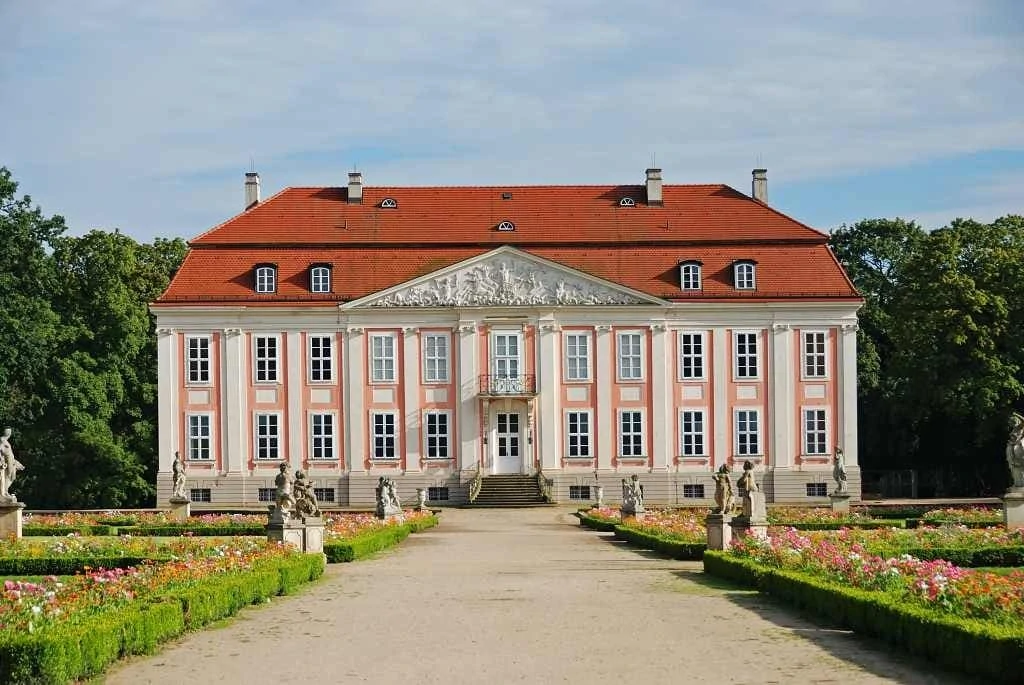
Located at the heart of Tierpark, this pleasure palace belonging for a time to the Dutchess Catherine of Holstein-Beck (a relation of the Tsars) started off as a manor farmhouse and ended up being used as a barracks for French soldiers, a prison, and then a farm and veterinary clinic!
Now carefully restored to show visitors what Friedrichsfelde was like when it was a luxury residence for members of the Russian royal family, visitors can make there way through the rooms admiring the portraits, porcelain, grass, and chandeliers before enjoying the 160 hectares landscaped park cum zoo which houses 9,000 indigenous and exotic animals.
Where: Berlin
When: 18th century
Style: Neoclassical
Open for visit: Yes, for more information, check here.
6. Hakeburg

A medieval-style manor house surrounded by a picturesque lake and forest, New Hakeburg was built in the early 1900s for Dietloff and Auguste von Hake to replace their nearby old castle which they had outgrown.
The new castle was built with every conceivable luxury including terraces, stables, garages, employee apartments, sports fields, boathouse and so on but these extravagances stretched their budget too far and the estate was sold in 1936 to Wilhelm Ohnesorge, minster of the Reich Post.
Then, in 1948 New Hakeburg was taken over by the SED and the “Karl Marx Party School” was established. In more recent times the young castle has been used as a film set.
Inside the castle, the rooms and hallways are empty, but those who like history and barren buildings will enjoy seeing the different wallpapers on the historic walls before admiring the view from the tower.
Where: Kleinmachnow, Brandenburg
When: 20th century
Style: Neo-Gothic
Open for visit: Exterior open 24/7. Special group tours are available for the interior.
7. Castle on Peacock Island
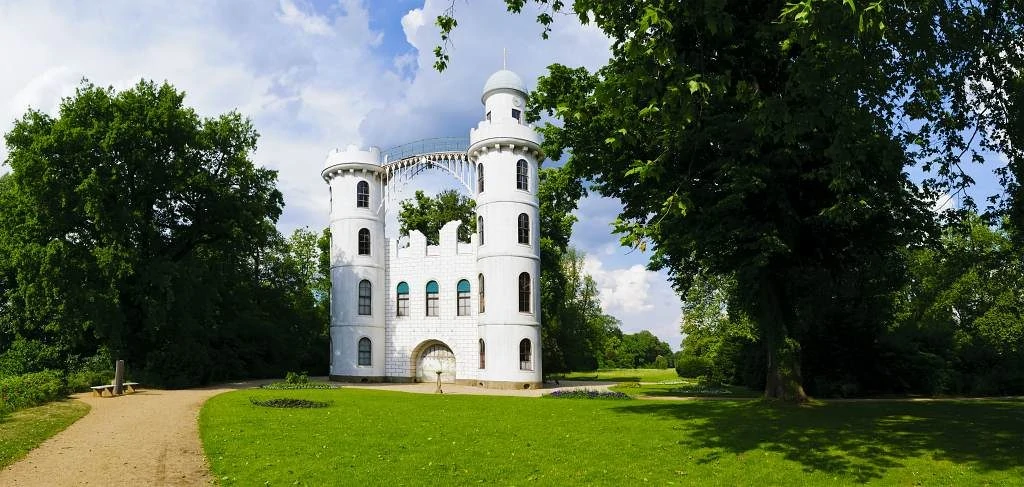
Located on Peacock Island on the River Havel, visitors will find the fairytale-like Pfaueninsel Palace. Built for Frederick William II, the King of Prussia, between 1794-1797, the charming white summer palace was built in a style that represented a ‘derelict rural Roman villa’.
Today, the palace is a museum of the Prussian Palaces and Gardens Foundation with the island a favourite picnicking spot for locals so cross the river and admire the view as you walk amongst the peacocks!
Where: Berlin
When: 18th century
Style: Romanesque
Open for visit: Closed for renovation work until 2024
8. Glienicke Palace
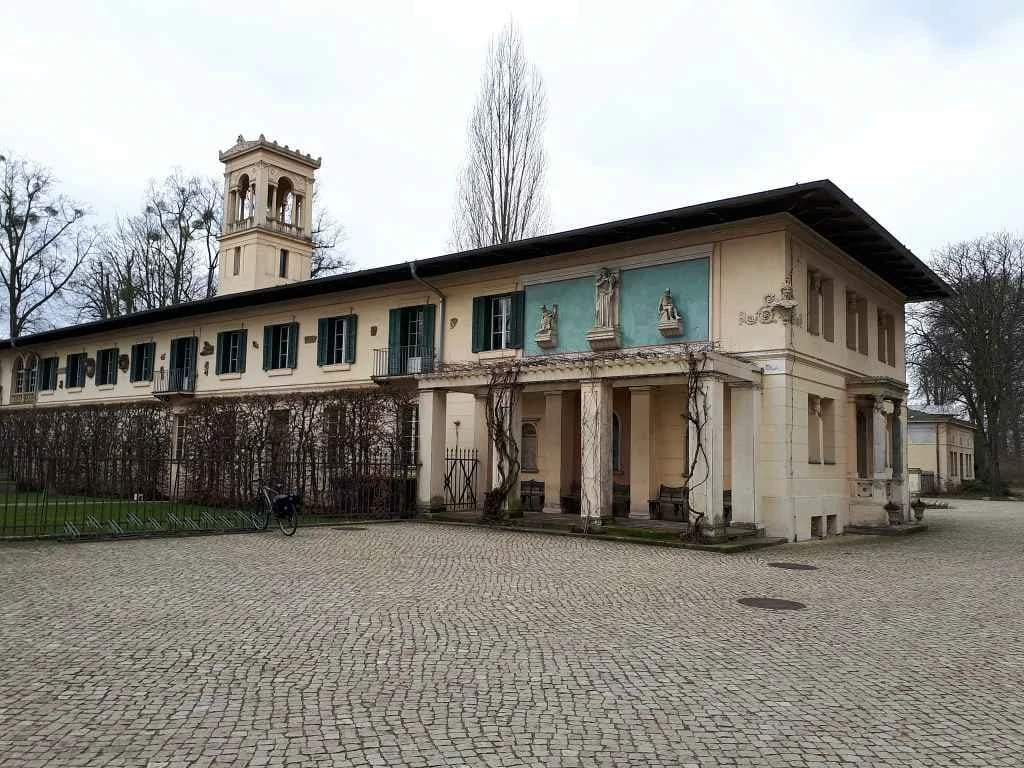
Built for Prince Carl of Prussia in 1825 on the bank of the River Havel, Glienicke Palace is reminiscent of an Italian country villa. Left to decay after the death of the Prince, the palace was used as a sports hotel and adult education centre after World War II.
Nowadays it has been restored to its former glory with visitors able to walk through the impressive Red Saloon amongst other rooms before exploring the Court Gardeners’ Museum and palace grounds and park.
Where: Berlin
When: 19th century
Style: Neoclassical
Open for visit: Yes, for more information, check here.
9. Marmorpalais
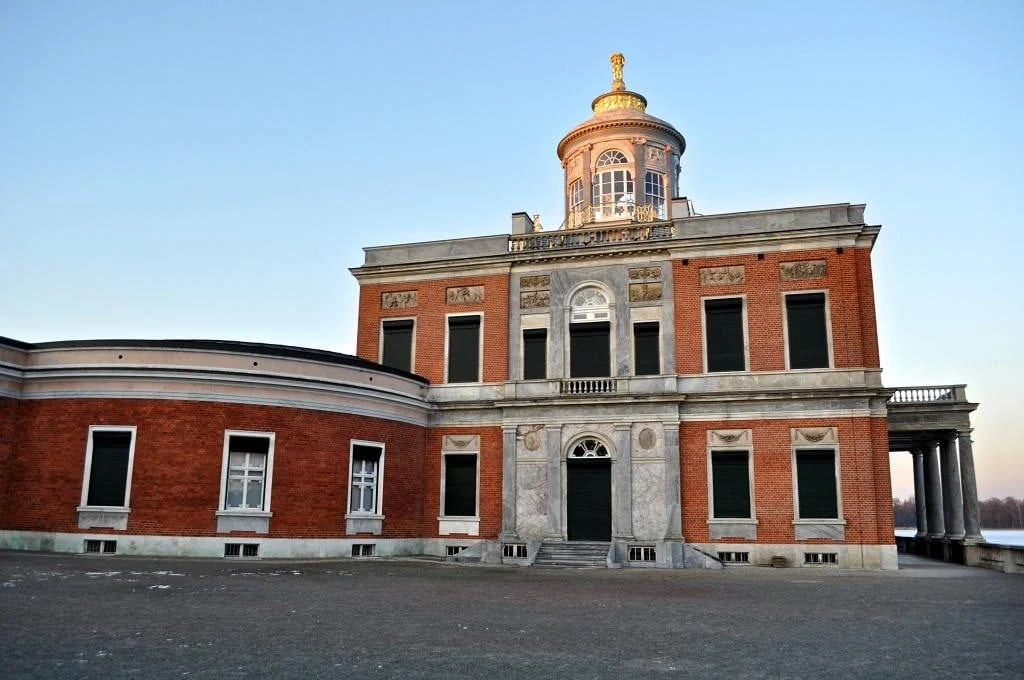
This former royal residence, a summer palace built for Friedrick Wilhelm II, is made of marble and located on the shores of the Heiliger See.
The only surviving early neo-classical palace of Prussia, Marmopalais (which translates as marble palace) opens its doors to visitors to show off its most fanciful rooms including the concert hall which is designed like an ancient temple, the Grotto Hall, and the Oriental Cabinet which was designed in a Turkish tent style.
Where: Potsdam, Brandenburg
When: 18th century
Style: Neoclassical
Open for visit: Yes, check here for information.
10. Bellevue Palace
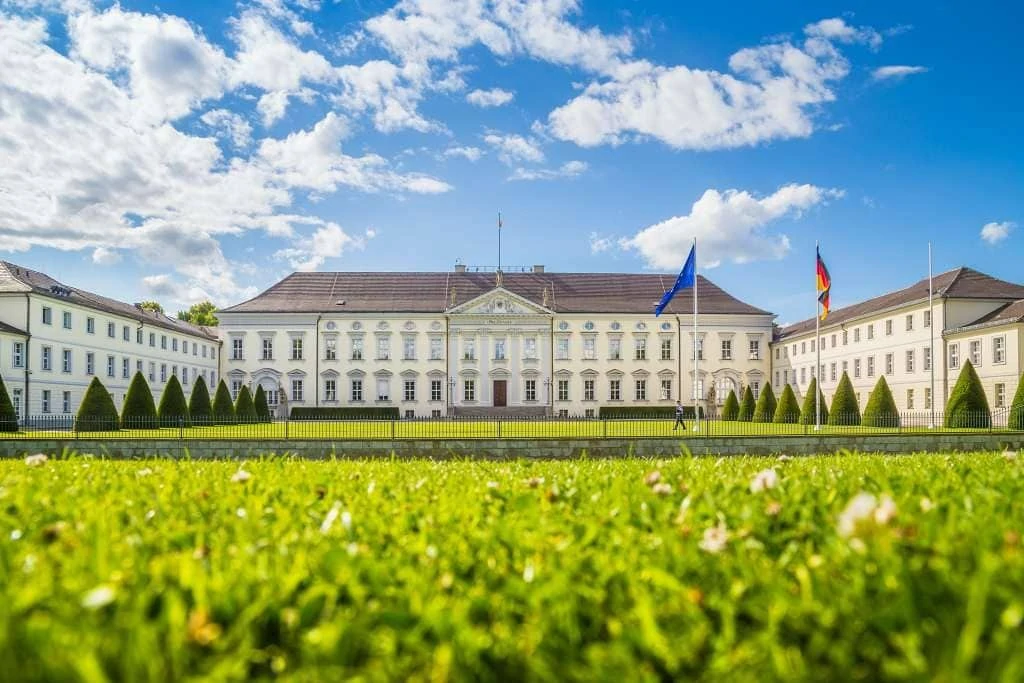
The official residence of the President of Germany since 1994, Bellevue Palace is Germany’s very own White House with the white neoclassical building located on the banks of the River Spree.
It was built for Prince August Ferdinand of Prussia in 1785 and used by his youngest brother as a private residence after which it became an art gallery, school, and a Reich guest house.
Where: Berlin
When: 18th century
Style: Neoclassical
PIN IT!
